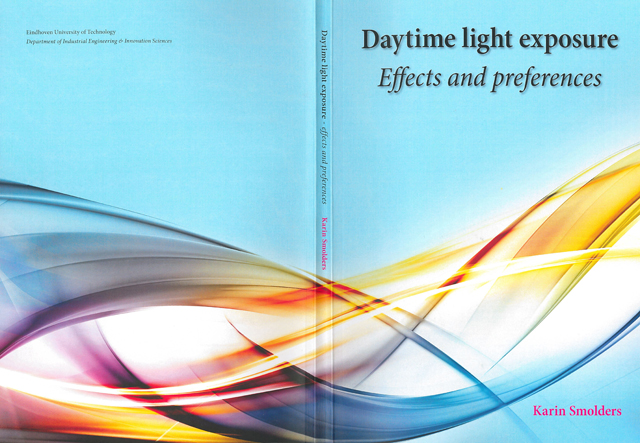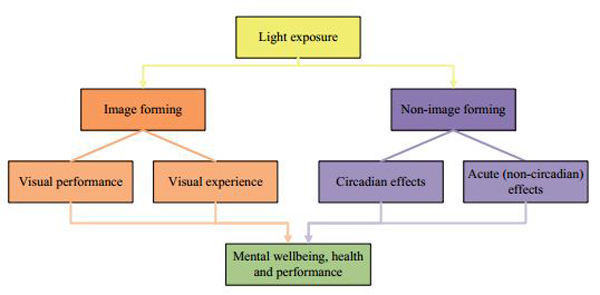
by Karin Smolders, Eindhoven University of Technology, Netherlands
Light enables us to see the world around us, but is also important for our physiological and psychological functioning. During the last decades, light has become an important research topic for engineers, chronobiologists and neuroscientists. Developments in lighting technologies (e.g., LED) are offering new possibilities for flexible, dynamic and personalized lighting applications. Moreover, the discovery of a third (non-rod, non-cone) photoreceptor in the human retina has significantly advanced our knowledge about the role of light in human behavior and physiology. A substantial body of research has demonstrated the relevance of light exposure for circadian regulation. In addition, research has shown acute activating effects of bright light exposure on subjective and objective indicators of alertness and arousal. These studies have revealed robust effects in the late evening and at night. Yet, to what extent and under what conditions such effects exist during daytime for healthy day-active persons is largely unknown.
In the current thesis, we studied the relation between diurnal light exposure and human functioning during daytime, from a more psychological perspective. Complementing earlier studies performed in domains of chronobiology and neuroscience, we explored the role of daytime light exposure in human mental wellbeing, health and performance, focusing on individuals’ behavior, experiences and preferences during regular daytime hours. To this end, a series of studies were performed to investigate potential alerting and vitalizing effects of bright light exposure during daytime on subjective experiences, task performance and physiology and to explore whether individuals’ appraisals and light preferences reflected these effects. A field study was performed to investigate daily light exposure patterns and explore the relationship between light exposure and feelings of vitality during daytime. Moreover, a series of laboratory studies was performed to explore effects of bright light exposure during regular daytime hours on self-report, task performance and physiological arousal measures. In addition, we investigated preferred light intensity as a function of alertness, vitality and performance, to explore whether persons would prefer a higher illuminance level, i.e., seek more light, when they felt mentally fatigued and depleted than when feeling more alert and vital.
Schematic overview of different routes for potential effect of light on human functioning.
Together, these studies demonstrated the relevance of light exposure for mental wellbeing and performance, even during daytime and in everyday life. Results of the field study showed that hourly light exposure was significantly related to feelings of vitality, indicating that persons who had been exposed to more light felt more energetic immediately afterwards. In line with these results, our laboratory studies showed that more intense light induces alertness, assessed with self-reports and some indicators for task performance and physiology, even during regular daytime hours (i.e., in the absence of sleep and light deprivation). More specifically, bright light exposure induced higher feelings of alertness and vitality, resulted in faster responses in sustained attention tasks and higher physiological arousal (measured with EEG power density in the theta range, heart rate and skin conductance level). Yet, effects on subjective alertness and vitality as well as on sustained attention were more consistent than the effects on the measures for cognitive performance and physiology. Moreover, results indicated that the effects on human experiences may depend on persons’ prior mental state (i.e., mentally fatigued vs. rested), and effects on task performance and physiology may depend on time of day, duration of exposure and type of indicator, motivating the use of person-centered and dynamic lighting scenarios for day-active persons.
Results of the studies investigating light preferences suggested that preferred light settings to perform an attention task are probably only modestly affected by a person’s experienced mental state. Overall, preferred illuminance levels showed substantial inter- and intra-individual variations and the alerting effects of bright light were only subtly reflected in individuals’ light preferences. This suggests that although participants may benefit from bright light exposure during regular daytime hours, persons may not consciously adjust the light to increase their level of alertness and vitality.
Up to now, research to the non-image forming effects of light had rendered convincing evidence for alerting and vitalizing effect of bright light exposure during persons’ biological night or on certain subgroups (such as persons suffering from seasonal affective disorder or dementia). Although those earlier findings mainly had practical implications for shift workers and particular clinical subgroups, the current research suggests the potential for the application of bright light (natural or electric) to benefit the population at large. Our results provide valuable insights for engineers and lighting designers in the development of person-centered lighting solutions, but also propose new research directions for scientists. Moreover, the results shed light on potential underlying mechanism during daytime.
Karin Smolders’ Ph.D. thesis can be downloaded at http://repository.tue.nl/762825




